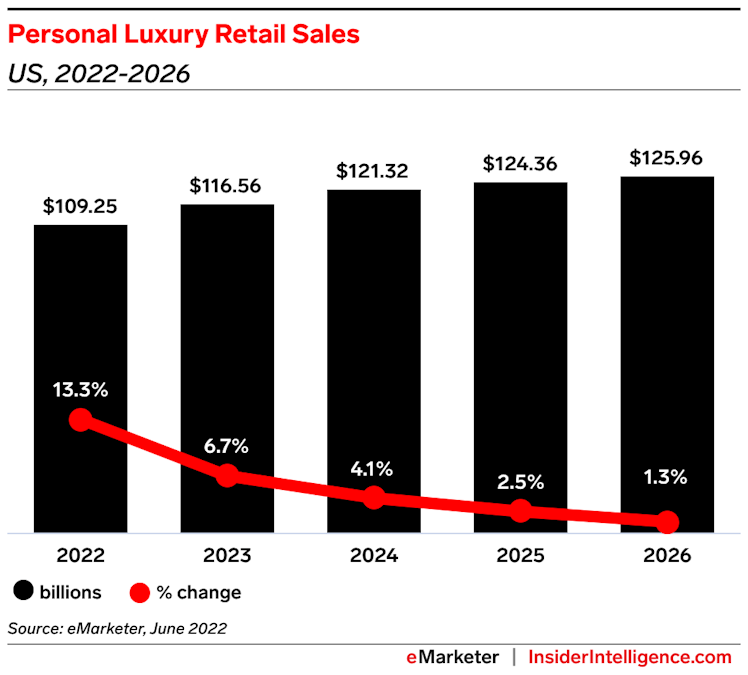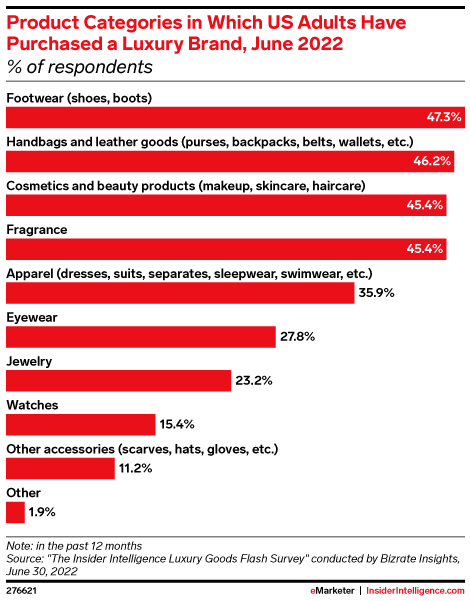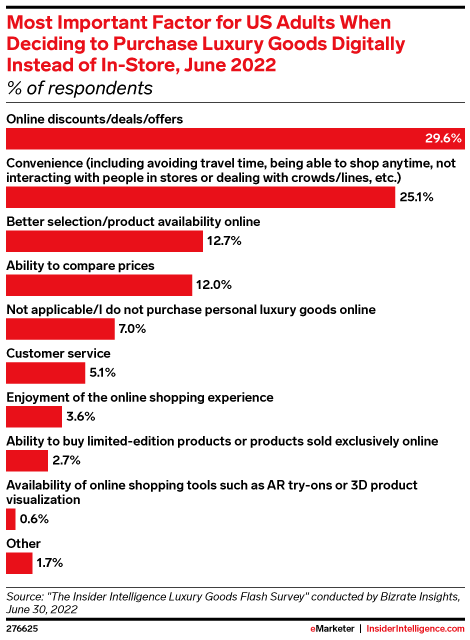Trending Assets
Top investors this month
Trending Assets
Top investors this month
What’s happening with luxury in 5 charts
In a year of shrinking margins and pulled-back consumer spending, luxury sales have remained relatively immune to the headwinds plaguing other retailers. Here are five charts that break down why the bubble hasn’t burst yet.
- Luxury’s inflation immunity

We forecast that personal luxury retail sales will continue to grow through 2026, though the double-digit growth it experienced this year will slow to just 1.3% growth by the end of our forecast period.
Though core luxury consumers may remain unaffected by inflation, younger and middle-income consumers will curb their spending on discretionary categories, causing the tapering decline in sales growth.
- Beauty, leather goods are consumer favorites

Product Categories in Which US Adults Have Purchased a Luxury Brand, June 2022 (% of respondents)
The most popular categories for US luxury buyers are footwear, handbags and leather goods, and cosmetics and beauty products.
The beauty category, in particular, has seemed well-insulated (see: the “lipstick effect,” when consumers continue buying little luxuries even in tough economic times because it’s inexpensive and justifiable), with companies like Ulta Beauty and Coty reporting strong sales growth over the past few months.
Meanwhile, LVMH Moet Hennessy Louis Vuitton attributed its third-quarter growth to its fashion and leather goods business.
- Shoppers go digital

Despite representing a smaller percentage of total personal luxury retail sales, we forecast that ecommerce sales of personal luxury retail will grow nearly 40% this year, though growth will slow in the years ahead.
This pattern is mirrored In China, where luxury retail has seen a similar bounce-back from pandemic levels, though ecommerce sales will see slightly larger growth than in the US.
- What consumers want

So what drives luxury consumers to shop online? Deals. Almost a third reported that online discounts or offers drove them to purchase luxury goods online. In addition, consumers shop online because it offers them more convenience and a better selection of products.
Some brands are experimenting with augmented reality/virtual reality try-on tools and the metaverse to attract online shoppers, but so far consumers remain uninterested in the technologies.
- Luxury is a top performer

According to our Industry KPIs, luxury was one of the top-performing categories in terms of indexed average order value growth, driven by wealthier consumers who are spending more per transaction.
Why we care: Inflation hasn’t taken the wind out of luxury’s sails … so far. But if consumers must continue to prioritize need-to-haves over want-to-haves, luxury may not escape unscathed.
Already have an account?